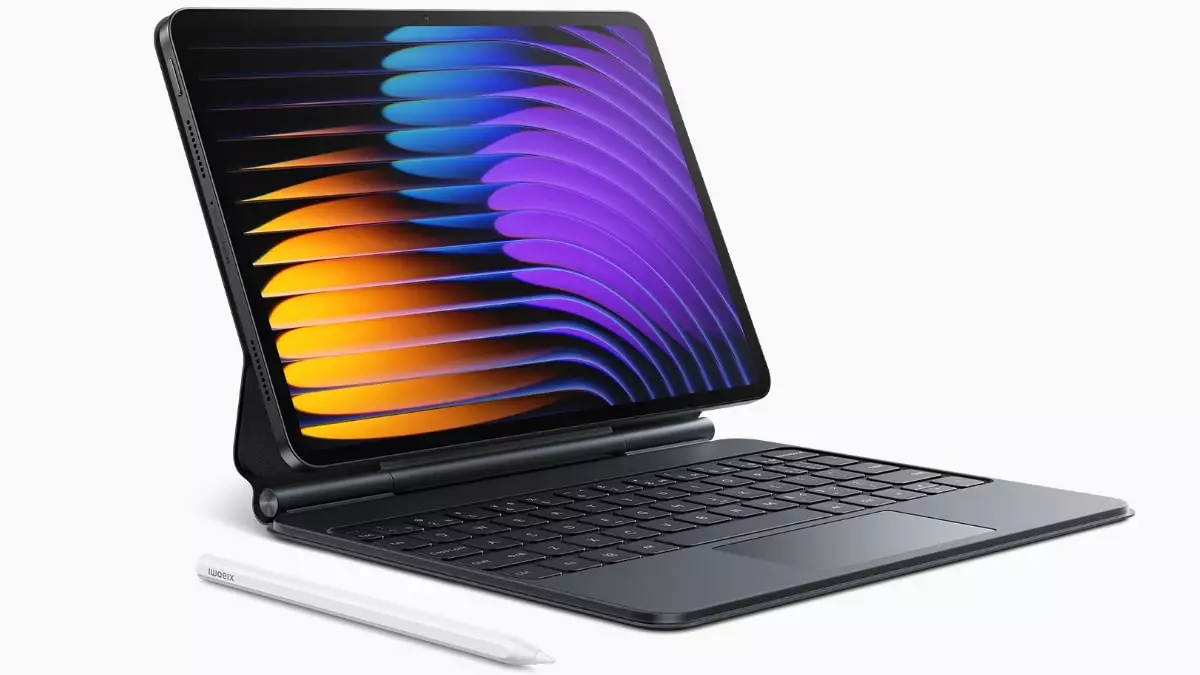Xiaomi has recently made a significant leap in the tablet market by unveiling its latest models, the Xiaomi Pad 7 and Xiaomi Pad 7 Pro. This launch, which took place during a notable event in China, showcases Xiaomi’s commitment to enhancing its product line-up with devices that cater to a variety of users, be it casual consumers or tech enthusiasts. Both variants are equipped with impressive technical specifications designed to enhance user experience, making them contenders in the lucrative tablet market.
One of the standout features of both the Xiaomi Pad 7 and Pad 7 Pro is their powerful processing capabilities. The Pad 7 Pro is powered by the Snapdragon 8s Gen 3 SoC, offering superior performance that is expected from a high-end tablet. This can be particularly beneficial for users who engage in resource-intensive tasks such as gaming, video editing, or multitasking with demanding applications. On the other hand, the base model, Xiaomi Pad 7, utilizes the Snapdragon 7+ Gen 3 SoC, providing a competent performance that would satisfy average users who require efficiency for everyday tasks.
The integration of these advanced chipsets into the devices not only enhances processing speeds but also potentially improves power efficiency, ensuring prolonged usage without rapid battery depletion.
Both models feature an 11.2-inch display boasting a stunning 3.2K resolution and a refreshing 144Hz rate, ensuring visuals that are both sharp and fluid. This level of display quality is ideal for a variety of uses, from streaming movies in high definition to engaging in mobile gaming with smooth animations. The new tablets also come with TUV Rheinland certification for low blue light emission, mitigating eye strain during prolonged use— a thoughtful addition for users who spend hours in front of their screens.
In terms of brightness, the display can reach up to 800 nits, making it usable even in well-lit environments. Coupled with Dolby Vision support, these tablets are positioning themselves as excellent multi-media devices that promise to deliver an enriching viewing experience.
Engineered to support robust usage, both models come equipped with an impressive 8,850mAh battery. The Pad 7 Pro supports rapid 67W charging, allowing users to recharge their device quickly when in a hurry, a significant factor for those who are always on-the-go. Conversely, the standard Xiaomi Pad 7 offers a 45W charging speed, which is still commendable but may require users to be more mindful of charging times.
The combination of a large battery and efficient processors in both models promises extensive usage periods, essential for users who might rely heavily on their tablets for work or entertainment.
Xiaomi’s pricing strategy demonstrates its awareness of market dynamics and consumer expectations. The base model, the Xiaomi Pad 7, is positioned as an affordable tablet starting at CNY 1,999 (approximately Rs. 23,500), making it attractive for budget-conscious consumers. Meanwhile, the Pad 7 Pro starts at CNY 2,499 (about Rs. 28,500) and escalates based on RAM and storage configurations, placing it in the premium segment but still competitively priced compared to other market leaders.
This strategic pricing allows Xiaomi to populate a broader segment of the market, catering to users looking for high-value products at varying budget levels.
The introduction of the Xiaomi Pad 7 and Pad 7 Pro marks a promising expansion in the tablet arena, as Xiaomi blends cutting-edge technology with consumer-centric features. By leveraging powerful chipsets, stunning displays, competent battery life, and thoughtful pricing, these tablets could very well redefine user experiences in the tablet category. With increasing competition in this segment, Xiaomi positions itself as a formidable player, and it remains to be seen how these devices will perform in the hands of consumers. As users become progressively discerning, Xiaomi’s adaptability to market trends and demands will be critical for sustaining its growth and influence in the tech industry.


Leave a Reply